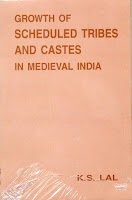महाभारत की इस कथा का सूत्र हरिवंश में पाया जाता है । इस लेख में तीन पात्र हैं, हालांकि उन तीन पात्रों में से दो व्यक्ति हैं और एक शहर है ।
यह तो सब भली भांति जानते हैं कि श्री कृष्ण की ही राय पर मथुरा को छोड़ने का निर्णय लिया गया था। मथुरा से दूर, समुद्र तट पर द्वारवती नामक स्थान पर एक नए शहर का निर्माण किया गया । मथुरा छोड़ने का कारण था जरासंध के उस शहर पर निरंतर आक्रमण । वृष्णियों ने यह भी स्वीकारा की वो जरासंध को सौ साल में भी पराजित नहीं कर सकते थे । ऐसी स्तिथि में मथुरा नगरी छोड़ने के अतिरिक्त कोई और विकल्प था ही नहीं।
जरासंध का अंत हुआ, और श्री कृष्ण की उसमे अहम् भूमिका थी, हालांकि वध भीमसेन के हाथों हुआ था। जरासंध वध की कथा महाभारत में सभा पर्व के जरासंध वध उप-पर्व में पायी जाती है । इस लेख में मै जरासंध से अधिक कालयवन पर ध्यान देना चाहता हूँ । जरासंध की भांति कालयवन भी ऐसा व्यक्ति था जिसे वृष्णि और अंधक पराजित नहीं कर सकते थे । क्यों? कालयवन की क्या कहानी थी?
कालयवन की कथा भी एक ऐसी कथा है जिसमें सारे मानव भाव पाए जाते हैं । गार्ग्य एक ऋषि थे जो वृष्णि और अंधकों दोनों के गुरु थे । पर मथुरा में उन्हीं के बहनोई ने उनका तिरस्कार किया, यह कहकर की गार्ग्य मर्द ही नहीं थे। गार्ग्य अपमान नहीं सह सके और उन्होंने मथुरा नगरी त्याग दी । पर अब गार्ग्य, जिन्होंने न विवाह किया था, जिन्होंने न संतान जन्मी थी, उसी गार्ग्य मुनिवर को अब संतान चाहिए थी । यह था अपमान का परिणाम! गार्ग्य ने शिव की आराधना की, और रूद्र से वरदान प्राप्त किया की उन्हें न सिर्फ़ एक पुत्र की प्राप्ति होगी पर एक ऐसा पुत्र जो वृष्णि और अंधकों को पराजित करने में समस्त होगा । अब यह एक पहेली ही है कि गार्ग्य ने संतान के साथ क्या वृष्णि और अंधकों को पराजित करने वाली संतान का भी वरदान माँगा था, क्योंकि हरिवंश पुराण ने इस विषय पर रौशनी नहीं डाली है । पर जो भी हो, शिव से यह वरदान तो मिल गया था गार्ग्य को ।
 |
| मुचकुन्द की आँखों की ज्वाला से कालयवन का जलना [श्रेय: http://bhaktiart.net/] |
जरासंध का अंत हुआ, और श्री कृष्ण की उसमे अहम् भूमिका थी, हालांकि वध भीमसेन के हाथों हुआ था। जरासंध वध की कथा महाभारत में सभा पर्व के जरासंध वध उप-पर्व में पायी जाती है । इस लेख में मै जरासंध से अधिक कालयवन पर ध्यान देना चाहता हूँ । जरासंध की भांति कालयवन भी ऐसा व्यक्ति था जिसे वृष्णि और अंधक पराजित नहीं कर सकते थे । क्यों? कालयवन की क्या कहानी थी?
कालयवन की कथा भी एक ऐसी कथा है जिसमें सारे मानव भाव पाए जाते हैं । गार्ग्य एक ऋषि थे जो वृष्णि और अंधकों दोनों के गुरु थे । पर मथुरा में उन्हीं के बहनोई ने उनका तिरस्कार किया, यह कहकर की गार्ग्य मर्द ही नहीं थे। गार्ग्य अपमान नहीं सह सके और उन्होंने मथुरा नगरी त्याग दी । पर अब गार्ग्य, जिन्होंने न विवाह किया था, जिन्होंने न संतान जन्मी थी, उसी गार्ग्य मुनिवर को अब संतान चाहिए थी । यह था अपमान का परिणाम! गार्ग्य ने शिव की आराधना की, और रूद्र से वरदान प्राप्त किया की उन्हें न सिर्फ़ एक पुत्र की प्राप्ति होगी पर एक ऐसा पुत्र जो वृष्णि और अंधकों को पराजित करने में समस्त होगा । अब यह एक पहेली ही है कि गार्ग्य ने संतान के साथ क्या वृष्णि और अंधकों को पराजित करने वाली संतान का भी वरदान माँगा था, क्योंकि हरिवंश पुराण ने इस विषय पर रौशनी नहीं डाली है । पर जो भी हो, शिव से यह वरदान तो मिल गया था गार्ग्य को ।






















